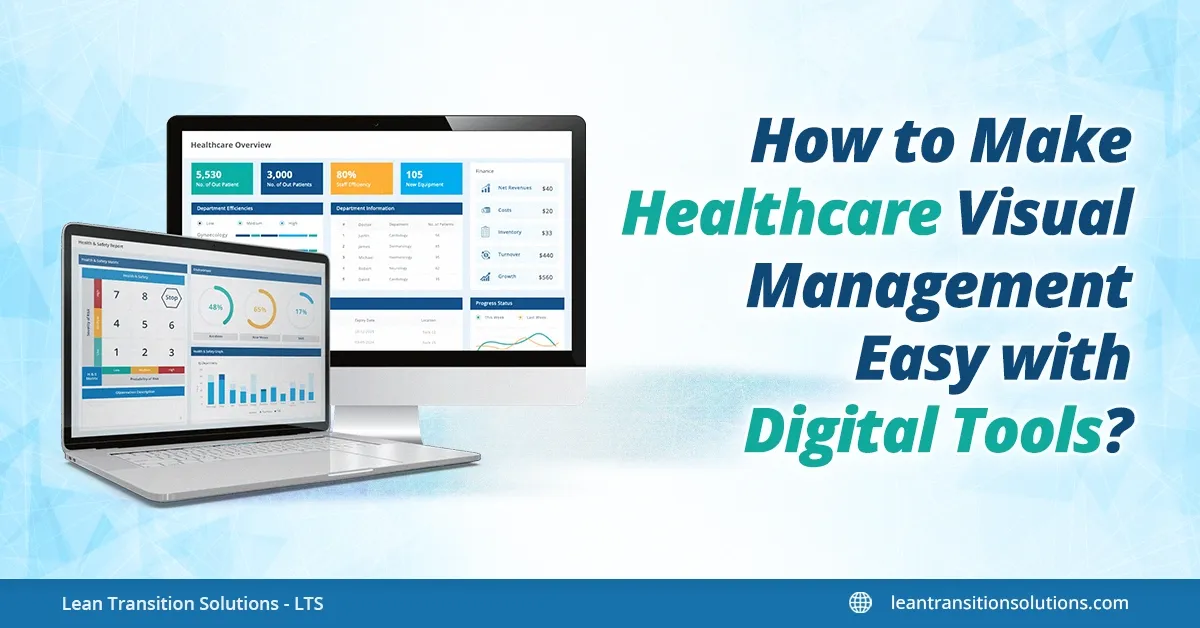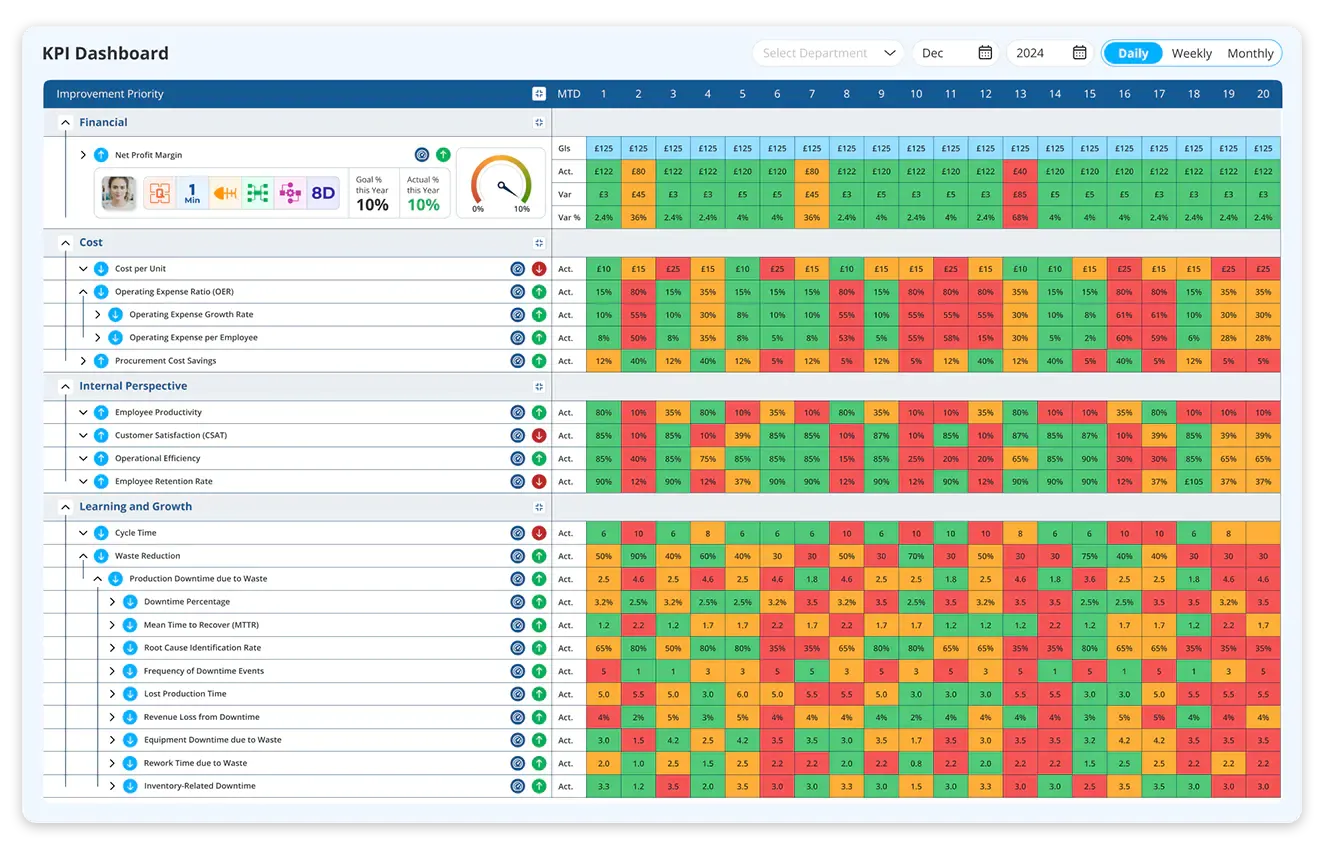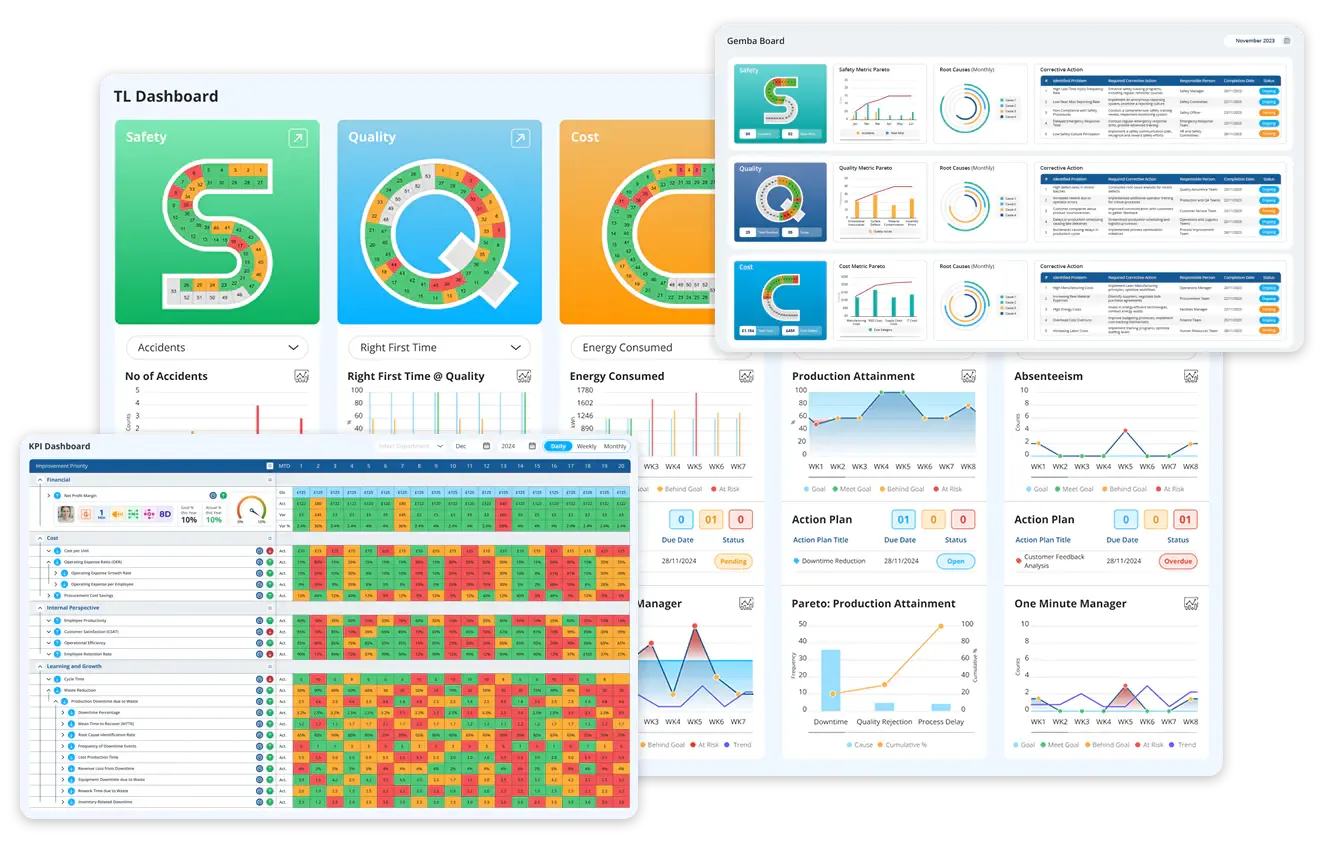Visual Management in Healthcare: Simplify Operations with Smart Visual Boards

November 3, 2025
Healthcare industry focuses on sensitive issues like the patient satisfaction, regular checking and maintenance of machines, employee efficiency and satisfaction etc. Any failure or mismanagement in these areas can cause the failure of achieving goals and worse, the lives of several individuals. It is utmost important to keep track on these issues accurately and regularly.
What do you mean by healthcare management?
Healthcare management involves overseeing the functioning of healthcare organisations such as hospitals, clinics, nursing homes, and public health agencies. The primary goal of healthcare management is to ensure that the patients receive high quality care and that the healthcare facilities operate in a smooth and sustainable manner.
What is visual management in healthcare?
As the name suggests, healthcare visual management tools provide data visually simplified in a manner everyone can understand and interpret. Digital visual management tools in healthcare takes this recording and presenting of data to the next level. Digital visual management tools act as a software easily accessed by staff from anywhere anytime, data that is accurate and up to date.
Let's see what kinds of hospital visual management tools are available and how they can be used in healthcare management.
Know more about visual management boards
A Visual Management Board (VMB) is a tool used by healthcare industry to present quantitative and qualitative data regarding performance, workflow, and improvement projects in a manner that is easy to interpret from a single glance.
Traditional visual management boards were physical boards that utilised charts, colour-coded metrics or tables. In a clinical unit, daily or weekly huddles were assigned where staff reviewed performance, discussed issues, and coordinated tasks, based on this board. The commonly presented Healthcare Key Performance Indicators

